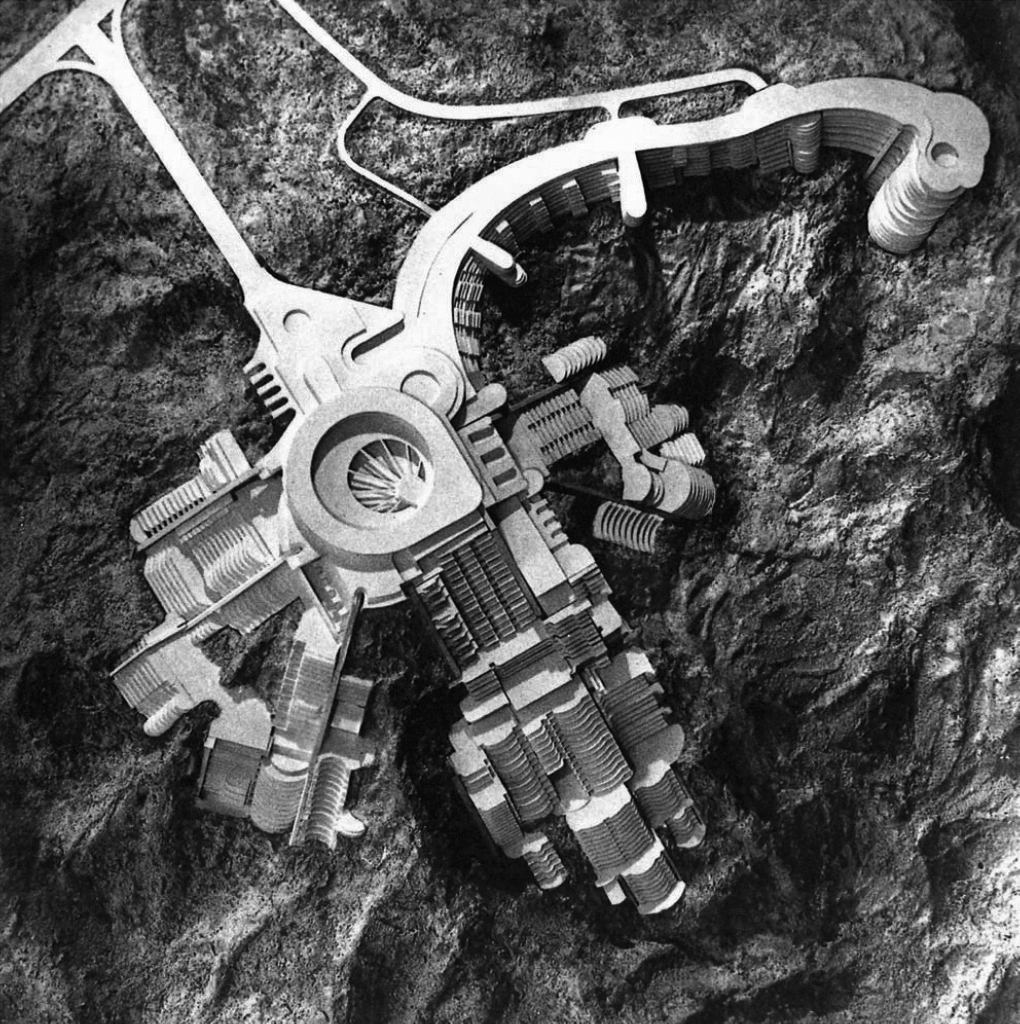As economic stimulus money has begun to flow to infrastructure, as our ecological footprint has become a major concern, and as suburban sprawl has started to run out of steam, few projects have as much newfound relevance as the First Award winner in the 1966 P/A Awards program: Daniel, Mann, Johnson & Mendenhall (now AECOM)’s Urban Nucleus at Sunset Mountain Park in the Santa Monica Mountains in Los Angeles. Designed by a young Cesar Pelli and Tony Lumsden for the Sunset International Petroleum Corp., the unbuilt design represented an alternative to suburban sprawl by leaving most of the 3,550-acre site undisturbed. It concentrated thousands of dwelling units in a series of concentric, concrete terraces that cascaded down the site’s steep slopes from a mountaintop urban center that contained parking and a full range of public and private programs. With inclined funiculars and pneumatic supply tubes serving each unit, the design mixed uses, transportation modes, and urban density with proximity to nature.
Megastructures have long gone out of fashion because of their sometimes overtly utopian or overly authoritarian solutions to urban life. And the substantial up-front investment and political will needed to get them built often doomed them before they began, as happened here. But times have changed. We now recognize the need to preserve open space, reduce suburban sprawl, strengthen our communities, and rebuild our infrastructure, and there may be no project more worthy of reconsideration than the Urban Nucleus as a model of what a compact, low-impact, building-as-infrastructure might be.
